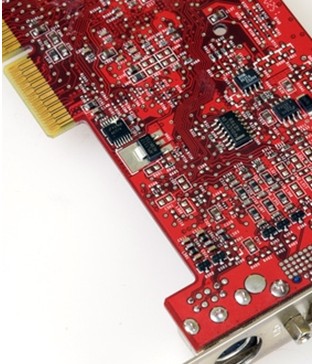-

- Sopto Home
-

- Special Topic
-

- PCI-E Card Knowledge
-

- How to Install a PCI Express NIC Card
PCI-E Card Knowledge
- Info about Network Interface Card Teaming
- How to Setup a Server with Multiple Network Interface Adapters?
- How to Reconnect an Internet Network Adapter for an Acer Aspire?
- 9 Things to Do When Your Internal Network Card Stops Working
- Ethernet Standards NIC for Home Networking
- What Is a Network Interface Adapter?
- How to Configure a Network Interface Card in Linux?
- How should Configure Your NIC for ISA and TMG?
- Recommended Network Card Configuration for Forefront UAG Servers
SOPTO Special Topic
Certificate



Guarantee
Except products belongs to Bargain Shop section, all products are warranted by SOPTO only to purchasers for resale or for use in business or original equipment manufacturer, against defects in workmanship or materials under normal use (consumables, normal tear and wear excluded) for one year after date of purchase from SOPTO, unless otherwise stated...
Return Policies
Defective products will be accepted for exchange, at our discretion, within 14 days from receipt. Buyer might be requested to return the defective products to SOPTO for verification or authorized service location, as SOPTO designated, shipping costs prepaid. .....
Applications

PCI-E NIC Cards provide redundant connectivity to ensure an uninterrupted network connection.
PCI-E NIC Cards are ideal for VM environments with multiple operating systems, requiring shared or dedicated NICs.
They are specially designed for desktop PC clients, servers, and workstations with few PCI Express slots available.
SOPTO Products
- Fiber Optic Transceiver Module
- High Speed Cable
- Fiber Optical Cable
- Fiber Optical Patch Cords
- Splitter CWDM DWDM
- PON Solution
- FTTH Box ODF Closure
- PCI-E Network Card
- Network Cables
- Fiber Optical Adapter
- Fiber Optical Attenuator
- Fiber Media Converter
- PDH Multiplexers
- Protocol Converter
- Digital Video Multiplexer
- Fiber Optical Tools
- Compatible
Related Products
Performance Feature
PCI-E Card Knowledge
Recommended


How to Install a PCI Express NIC Card
PCI Express often referred to as PCI-E or PCIe, is a computer bus technology that allows expansion cards to communicate with the computer's processor. PCI-E slots started appearing on computer motherboards in 2004 and have since gained popularity over older and slower PCI and AGP slots. Installing a PCI-E card is much like installing other cards, but it has its own slot and often requires an additional power connection.
Step 1
Turn off the computer and unplug all the cables from the back of it. Make sure that you record on the paper which plugs the cables go into, since you will have to put them back shortly.
Step 2
Remove the computer case. Some cases require removal of some screws on the back of the computer before sliding the case off, and others may have a latch that must be pulled to release the case. The exact process will be different for every model of computer, so consult the user's manual or the manufacturer's website for specific directions.
Step 3
Locate an open PCI-E slot. The PCI-E slots typically are black, although they can be any color. The slot will have one small section about half an inch long, followed by a much longer section. The PCI-E slot also will often have a latch on it, which secures the card once it is in place. The PCI-E slot will be located with the rest of the slots, near the back of the computer.

Step 4
Remove the metal cover from the opening in the back of the computer where the card will go. There will be a screw holding the cover to the back of the computer. Keep the screw, as you will need it to secure the PCI Express card to the back of the computer. If you are replacing another card, you will not need to do this, as the opening was already there.
Step 5
Insert the PCI-E card into the slot. Orient the card so the connectors on the backing plate are pointing through the opening you just created in the back of the computer. Press down on the center of the card until it slides into place.
Step 6
Place a screw in the small cutout on the metal backing plate. Screw the backing plate into the back of the computer.
Step 7
Attach a power cable to the PCI-E card, if necessary. Some cards, especially high-end graphics cards, require more power than they can get through the PCI-E slot. In this case, plug one of the 4-pin cables coming from the power supply into a receptor on the card.
Step 8
Close the computer case and reattach all the cables. Turn on the computer and place the installation disc that came with the PCI Express card in the CD-ROM drive. The installation software should run automatically, so just follow the prompts to install the card software.
You May Want to Know:
PCI Express History and revisions



